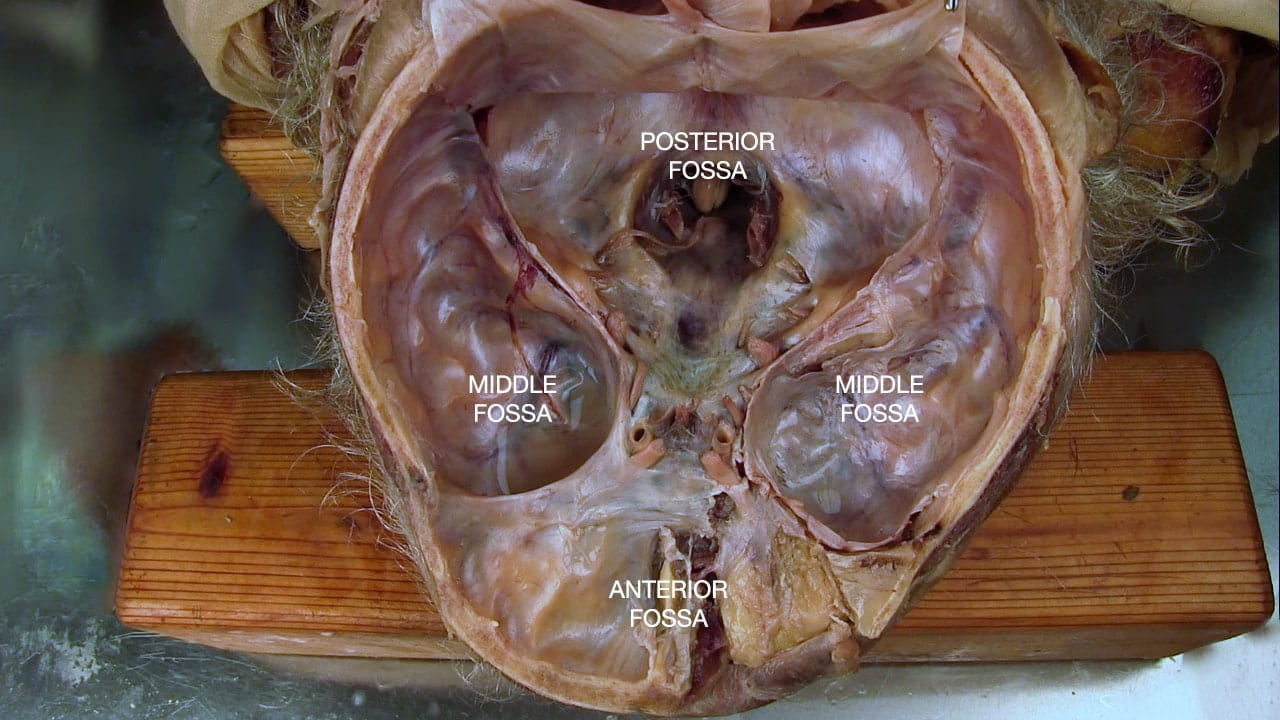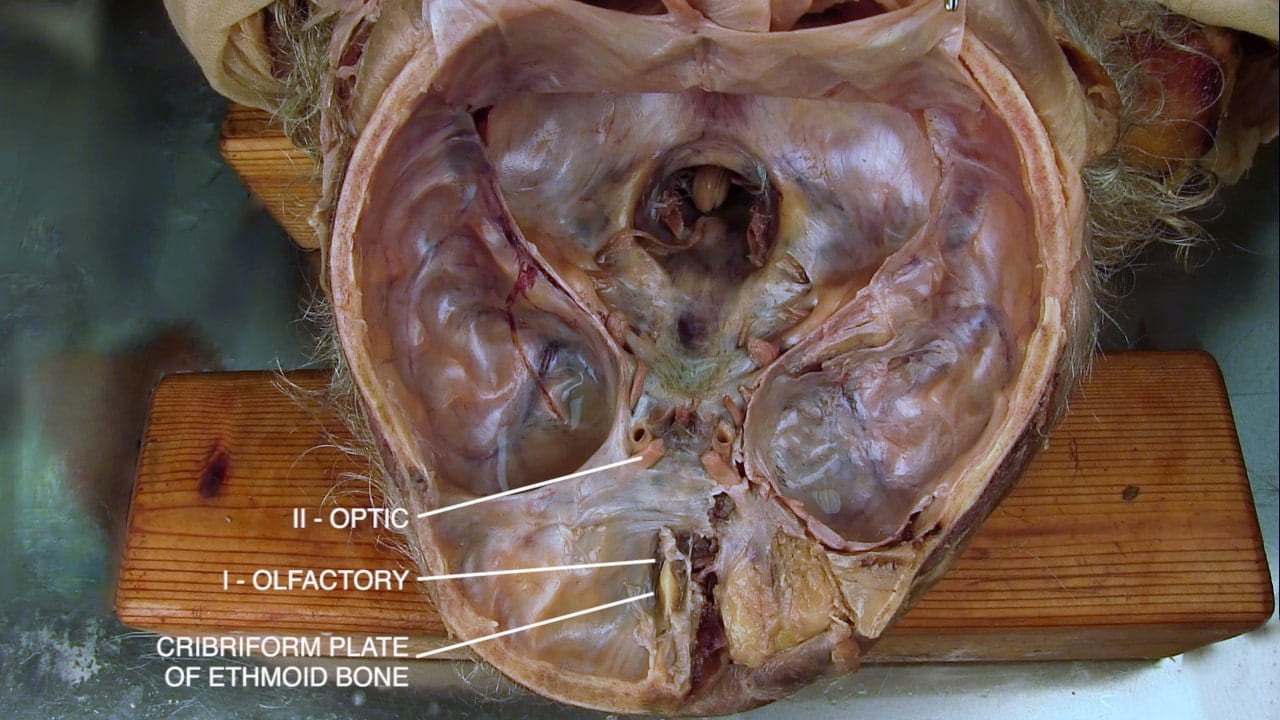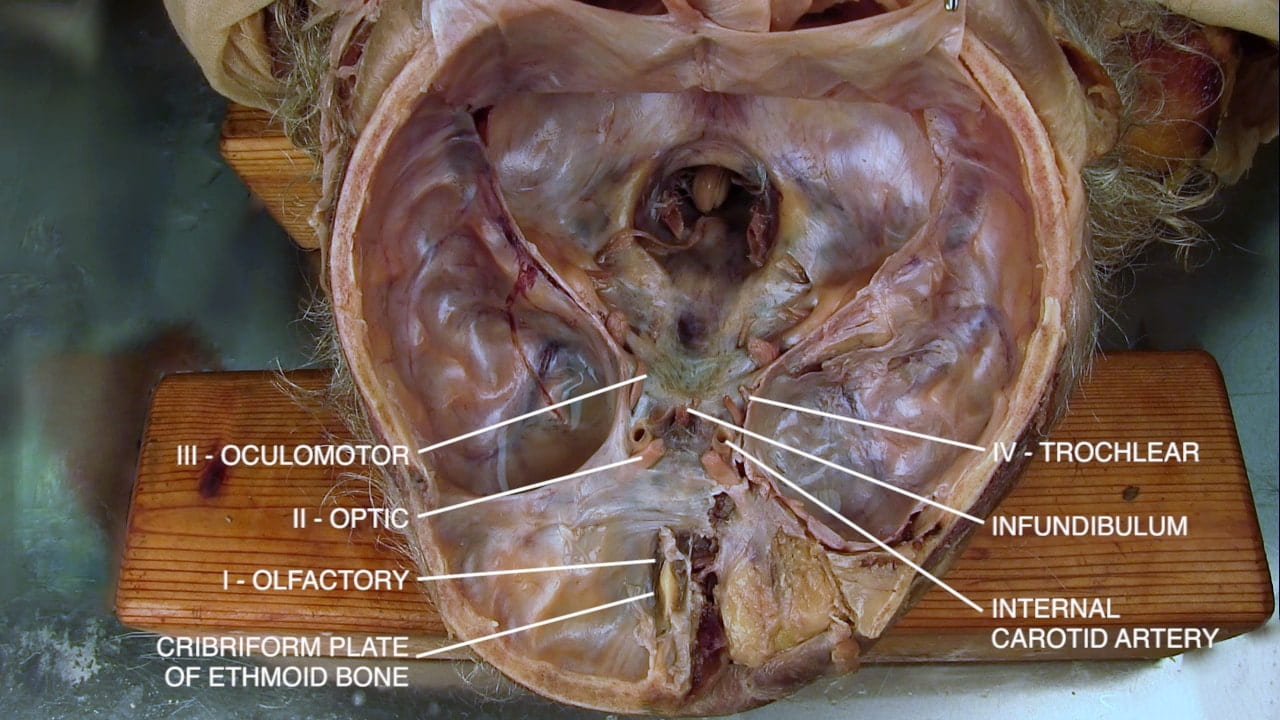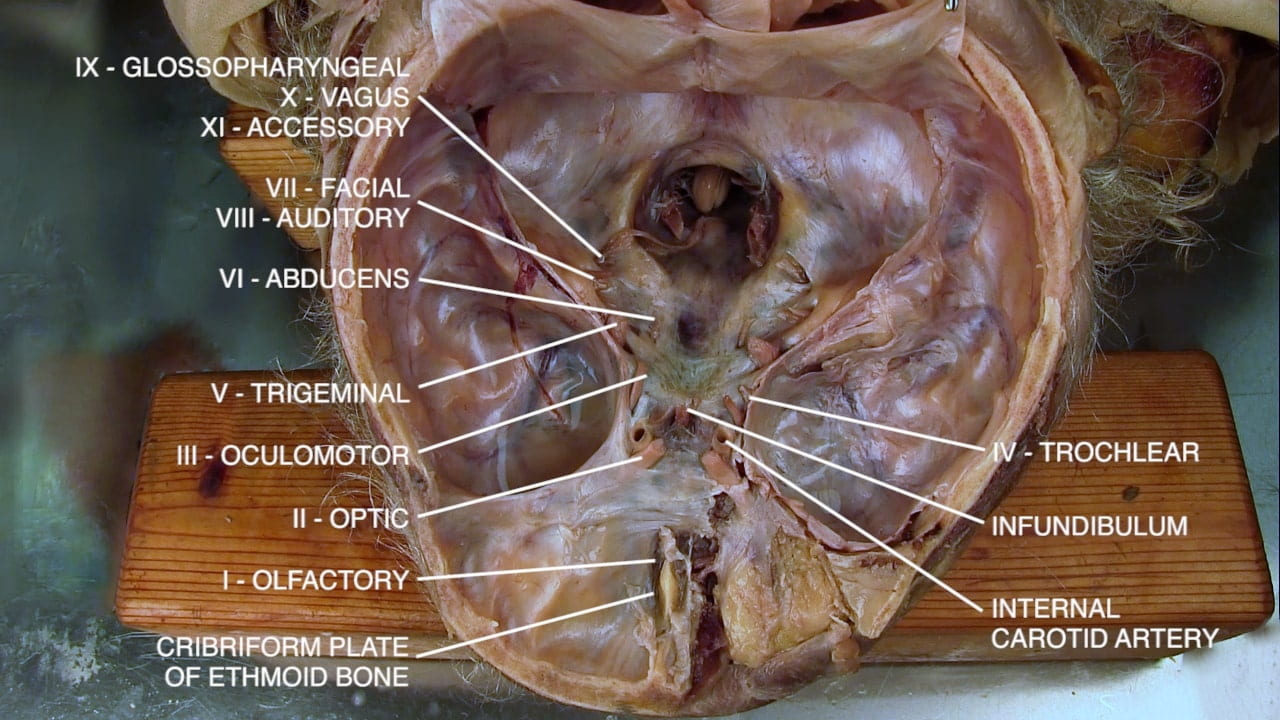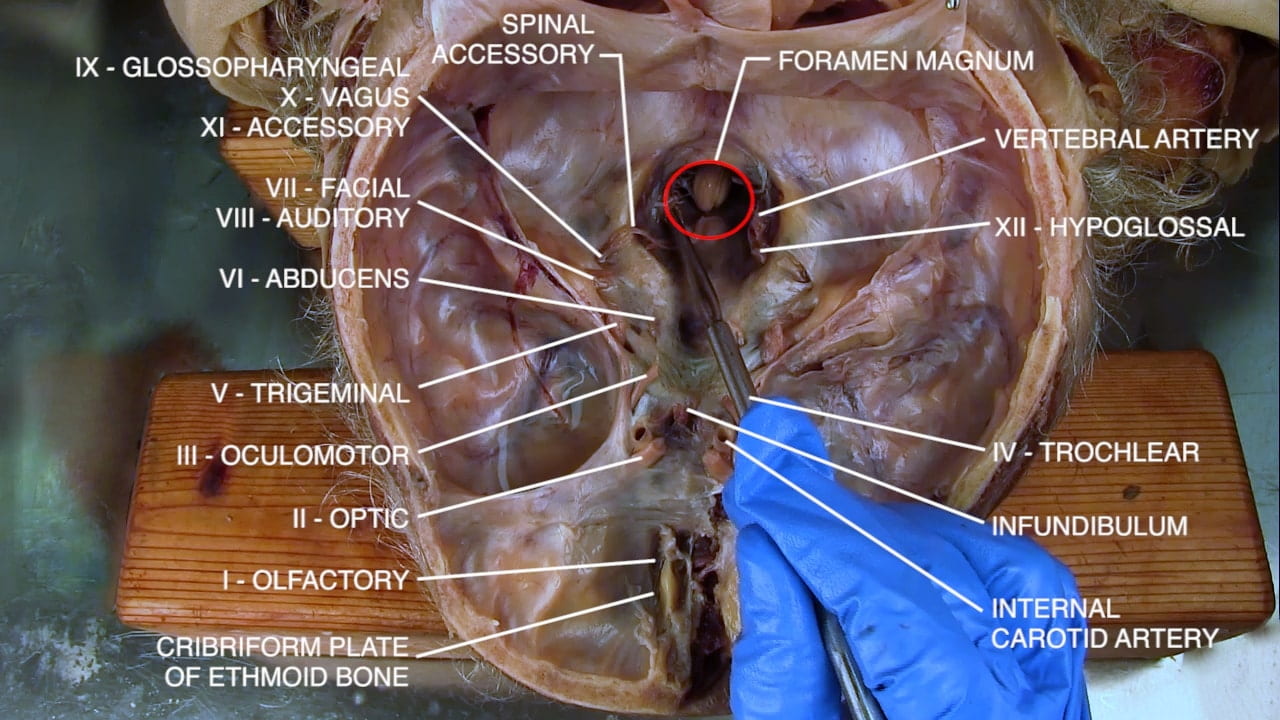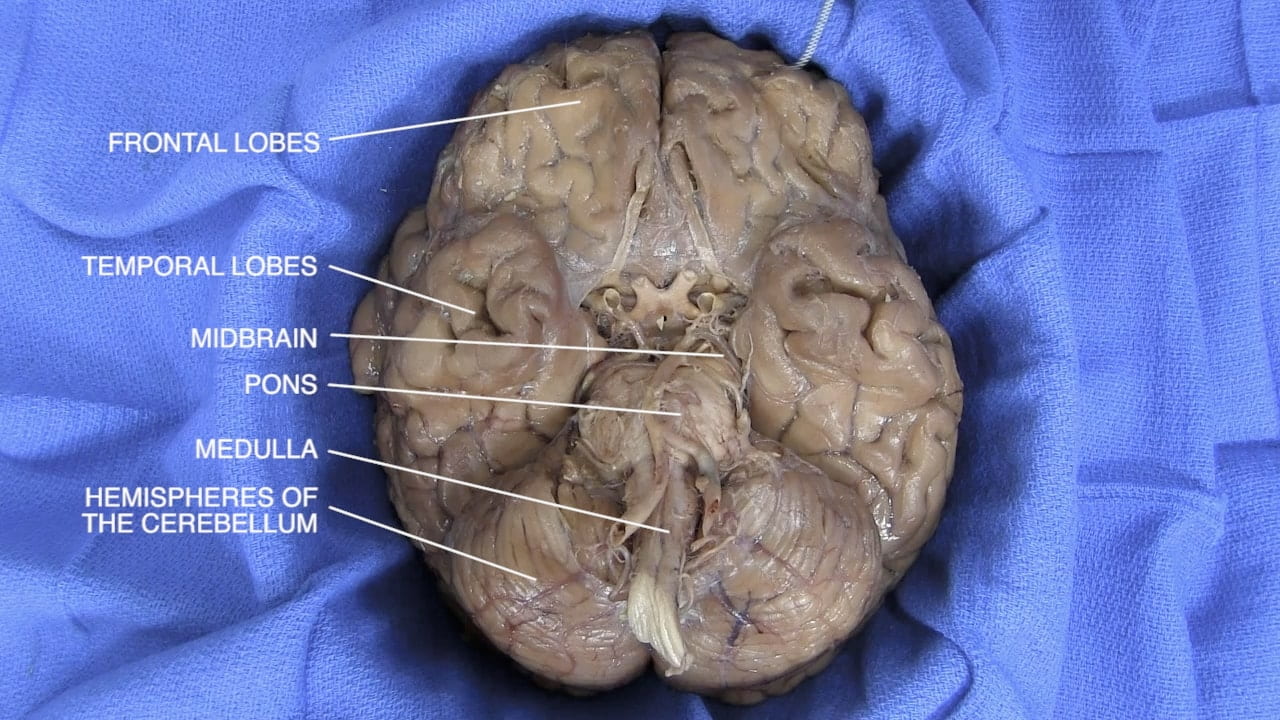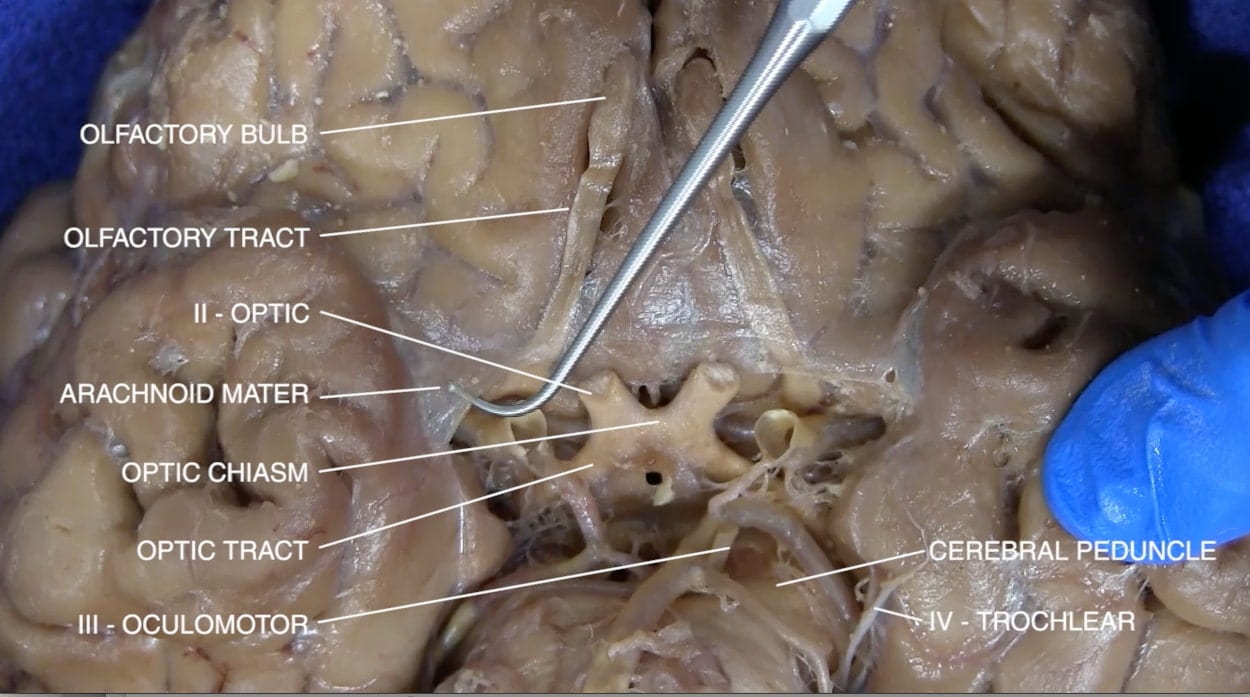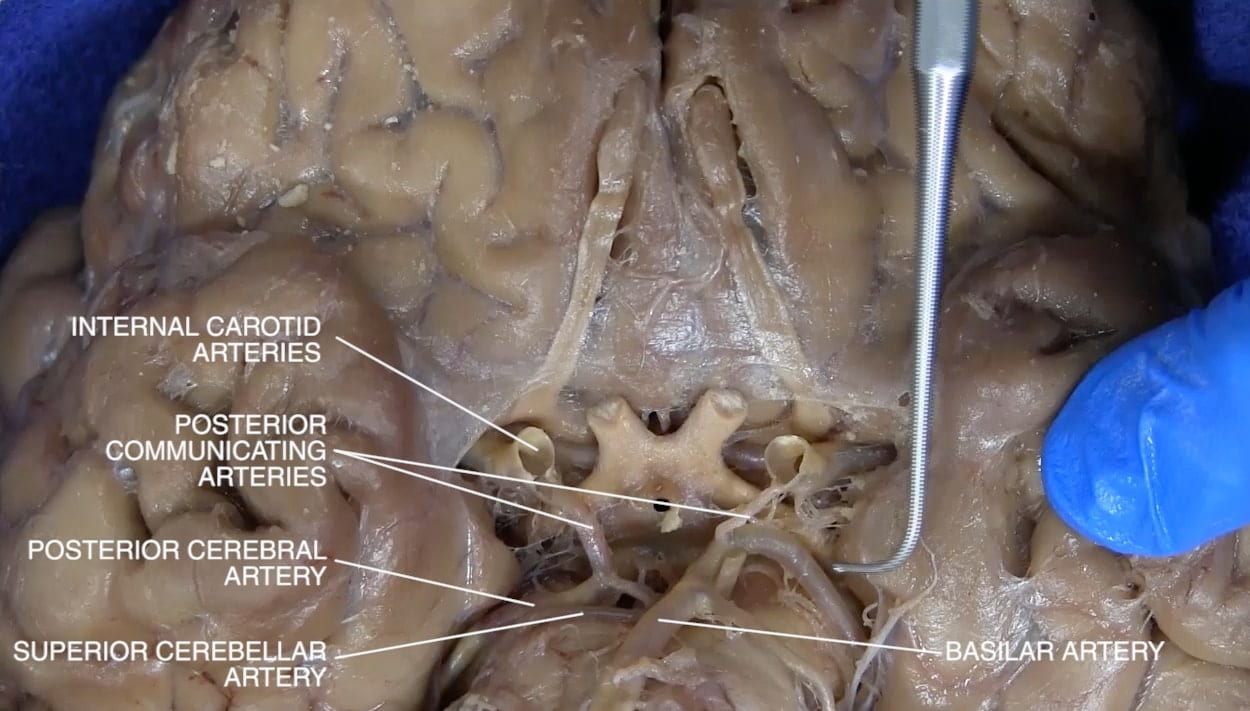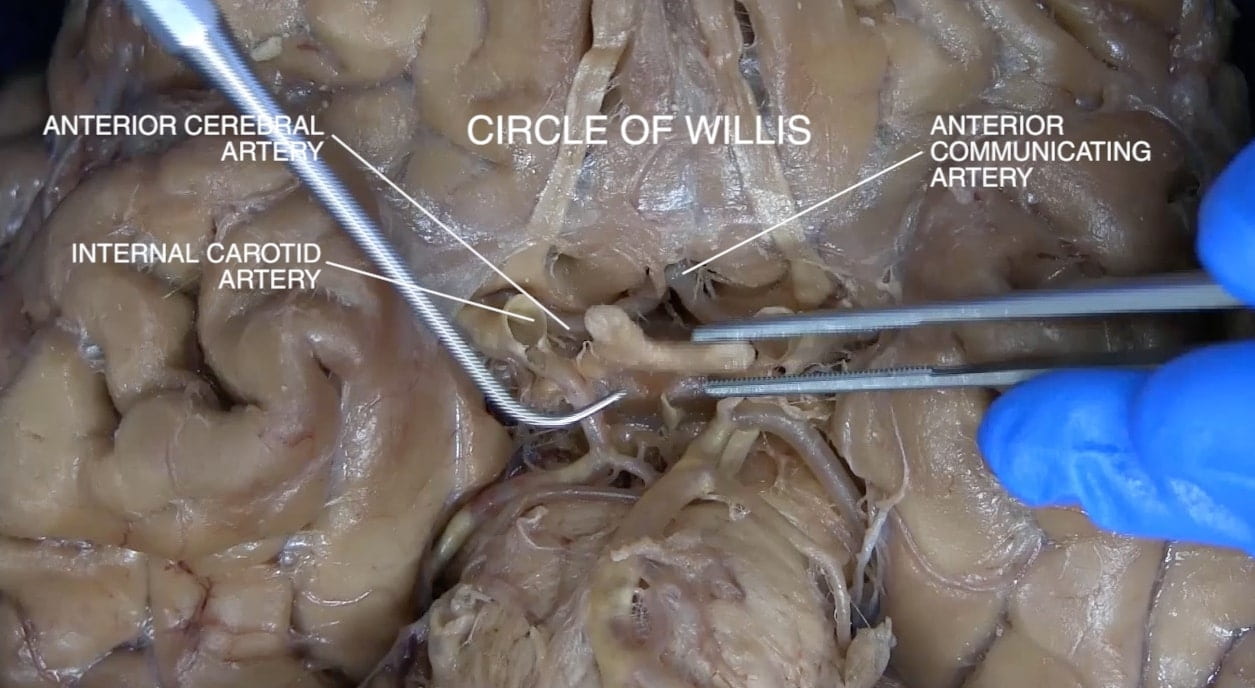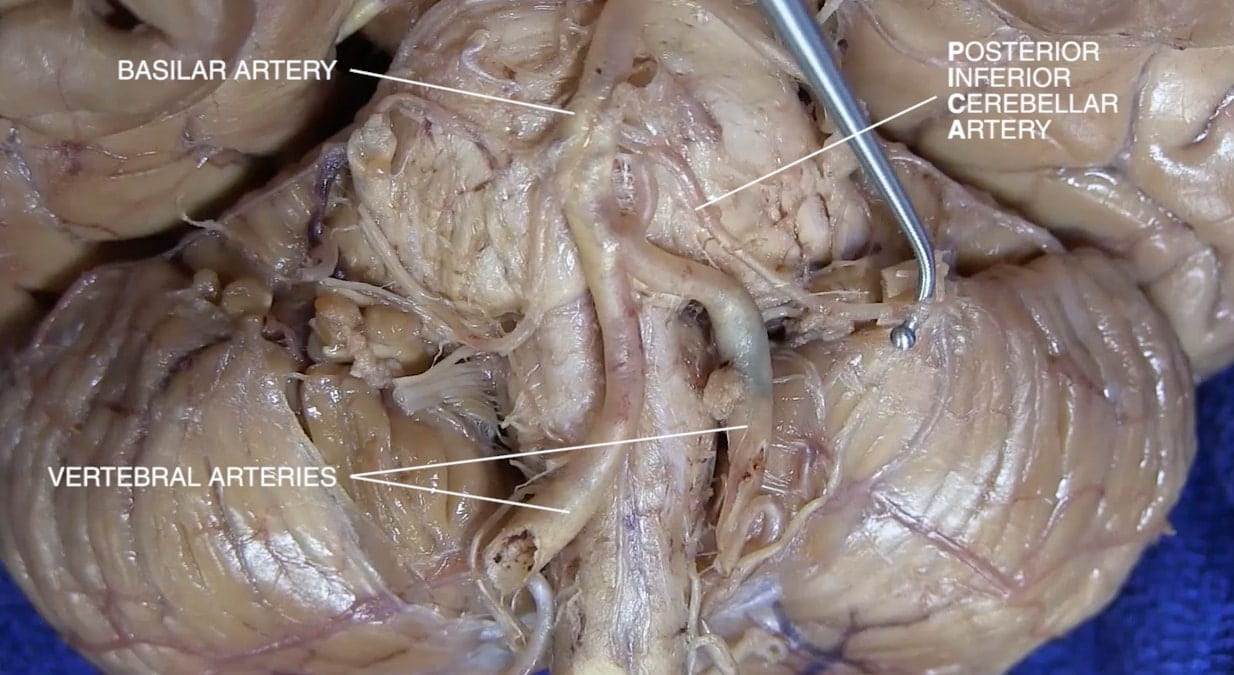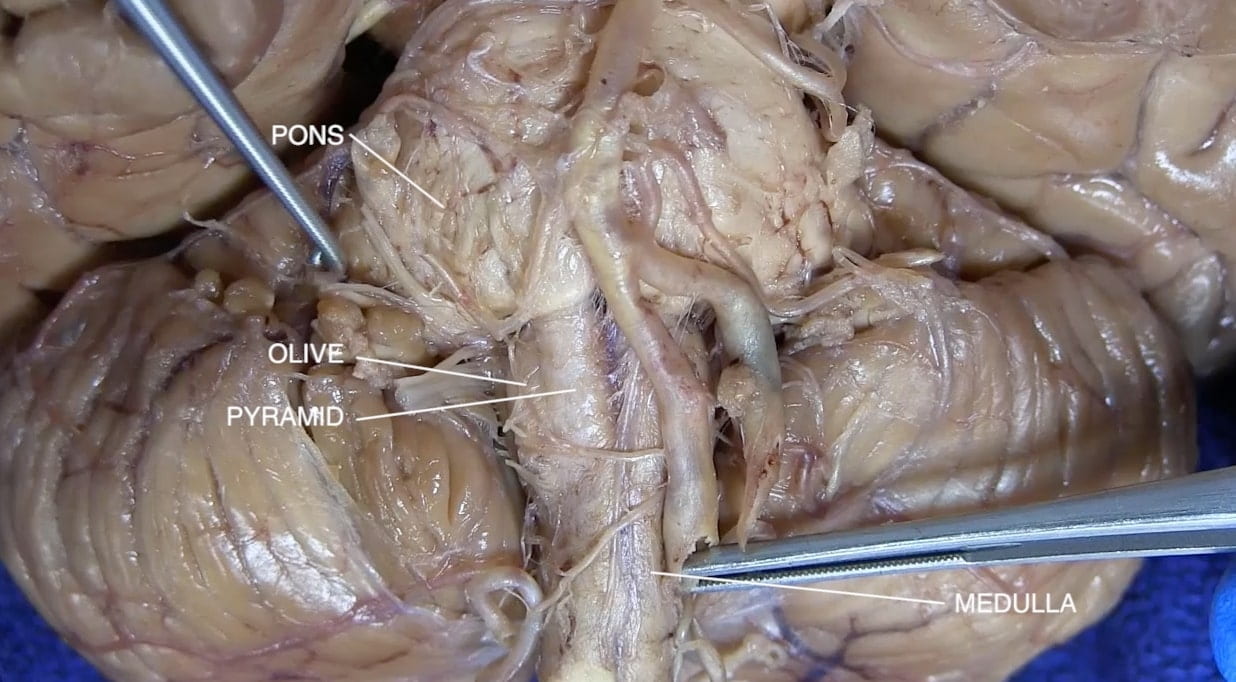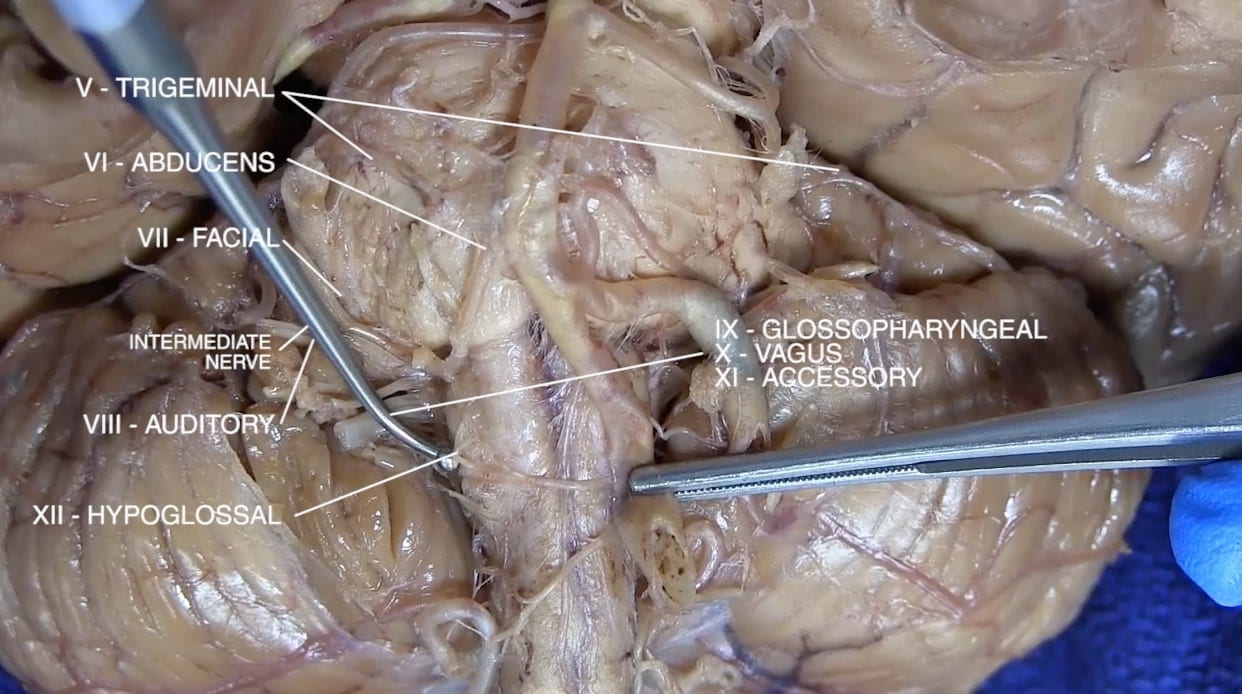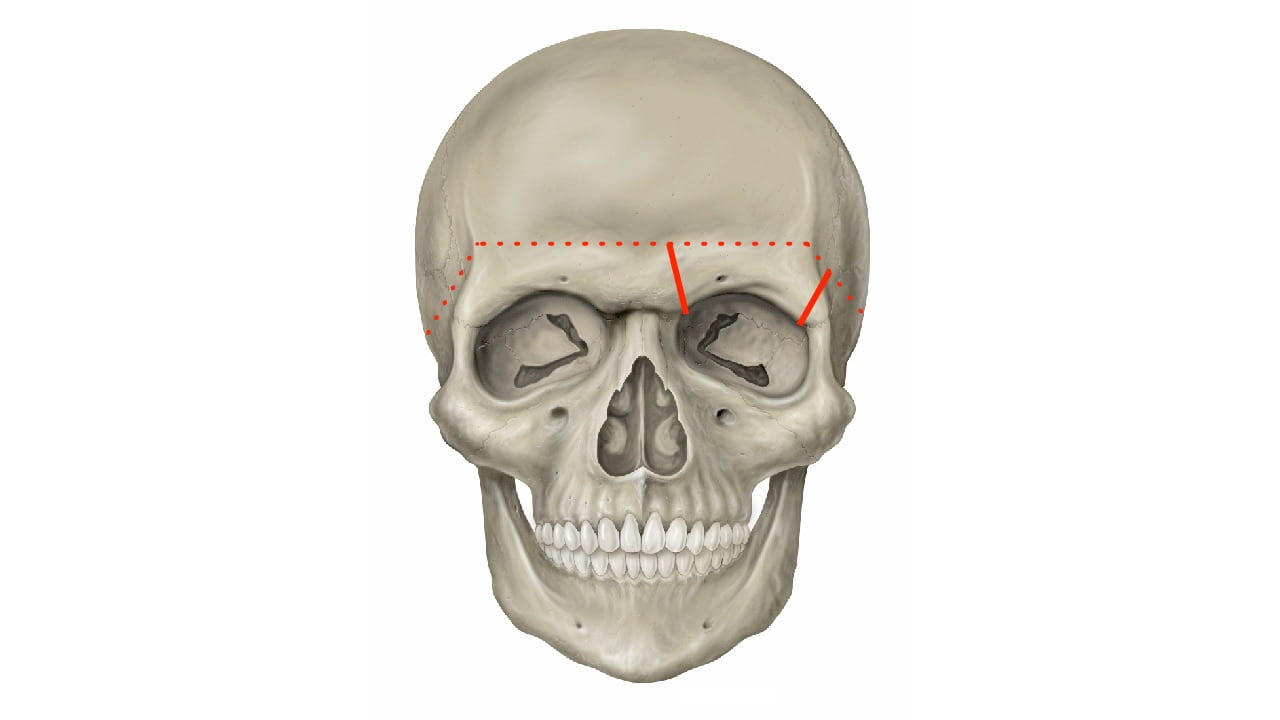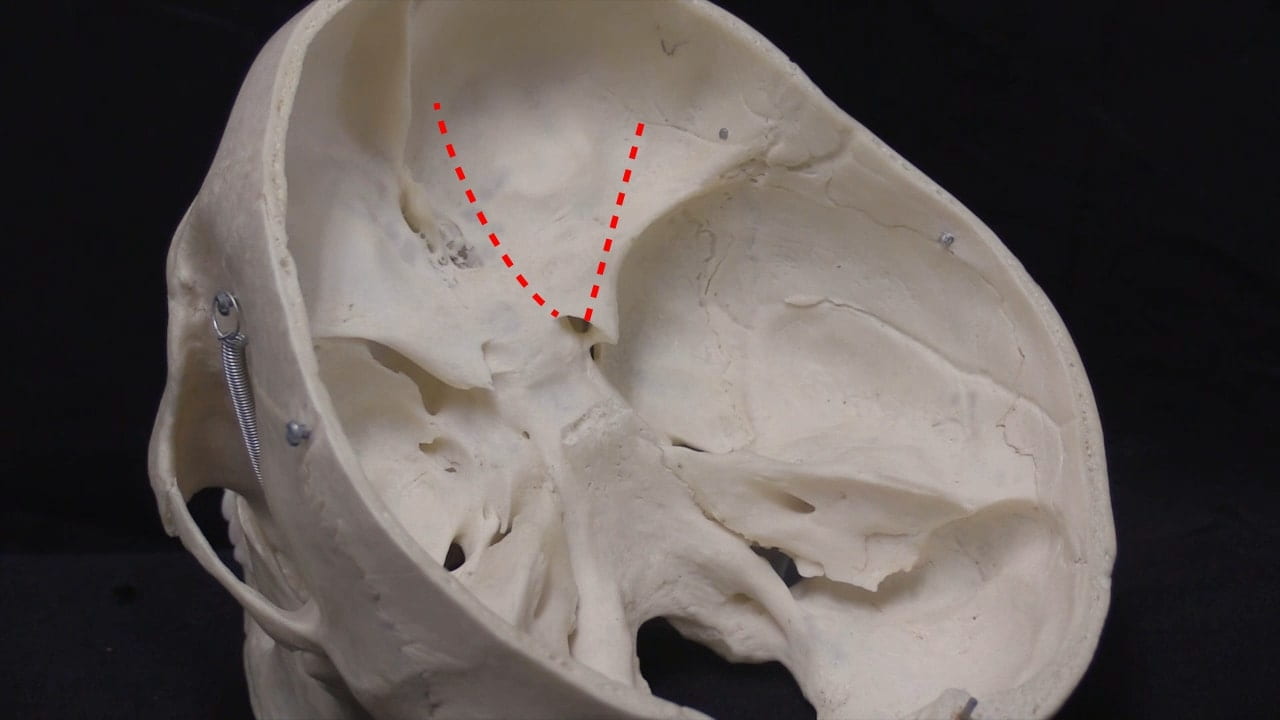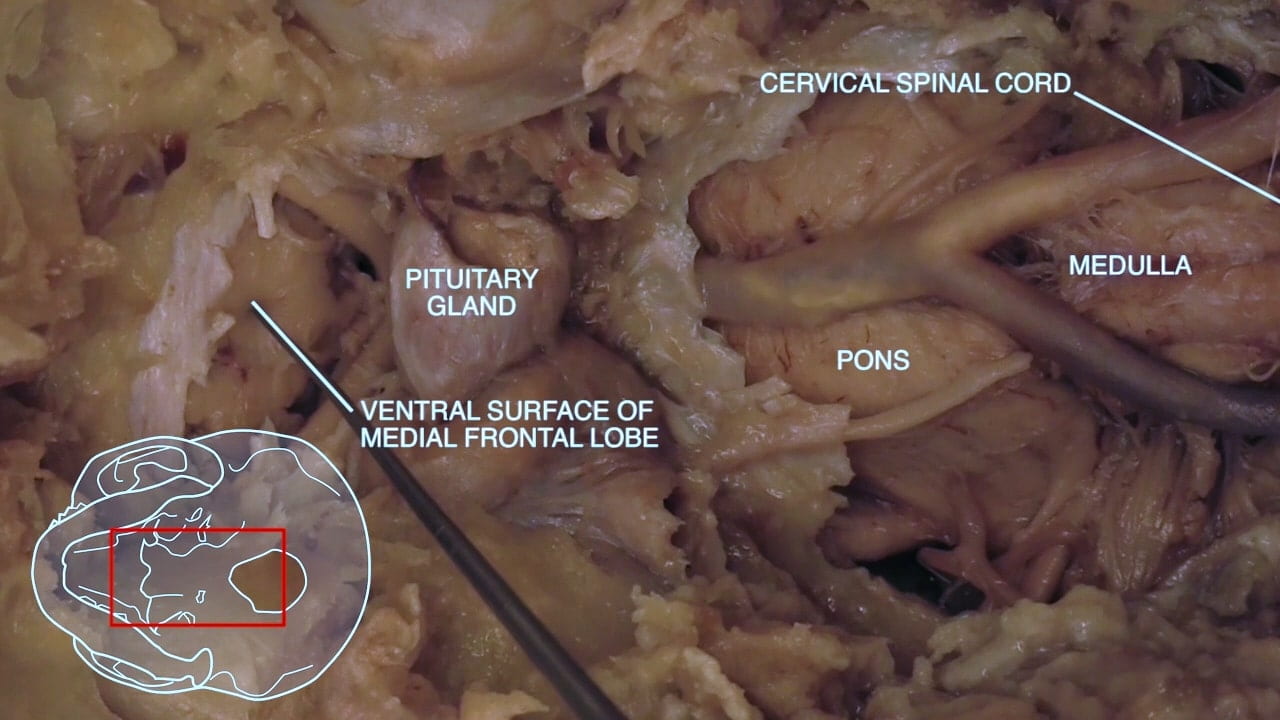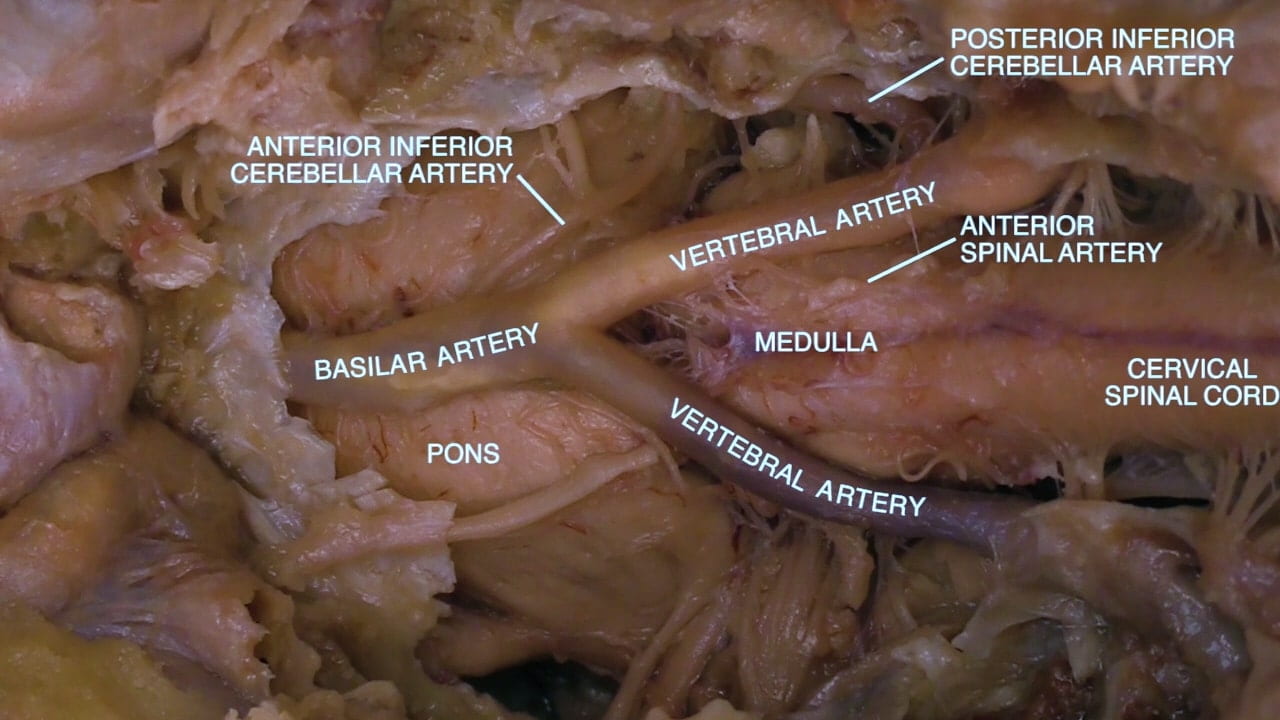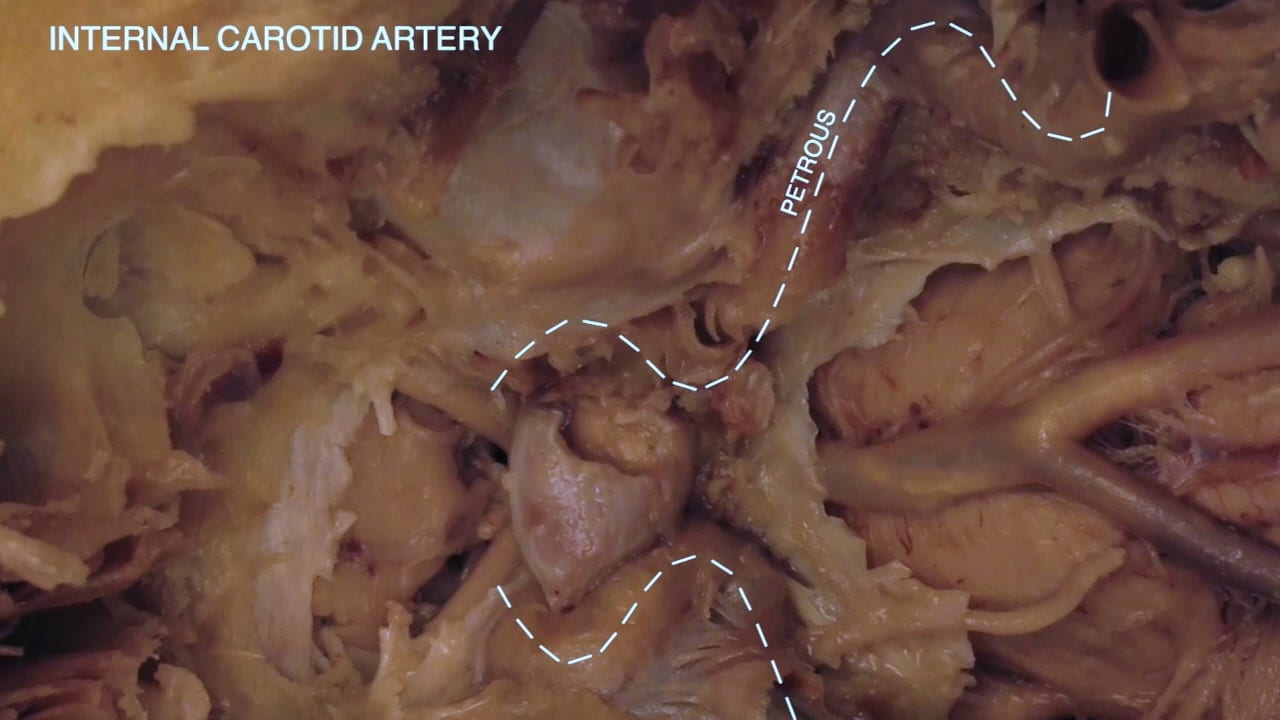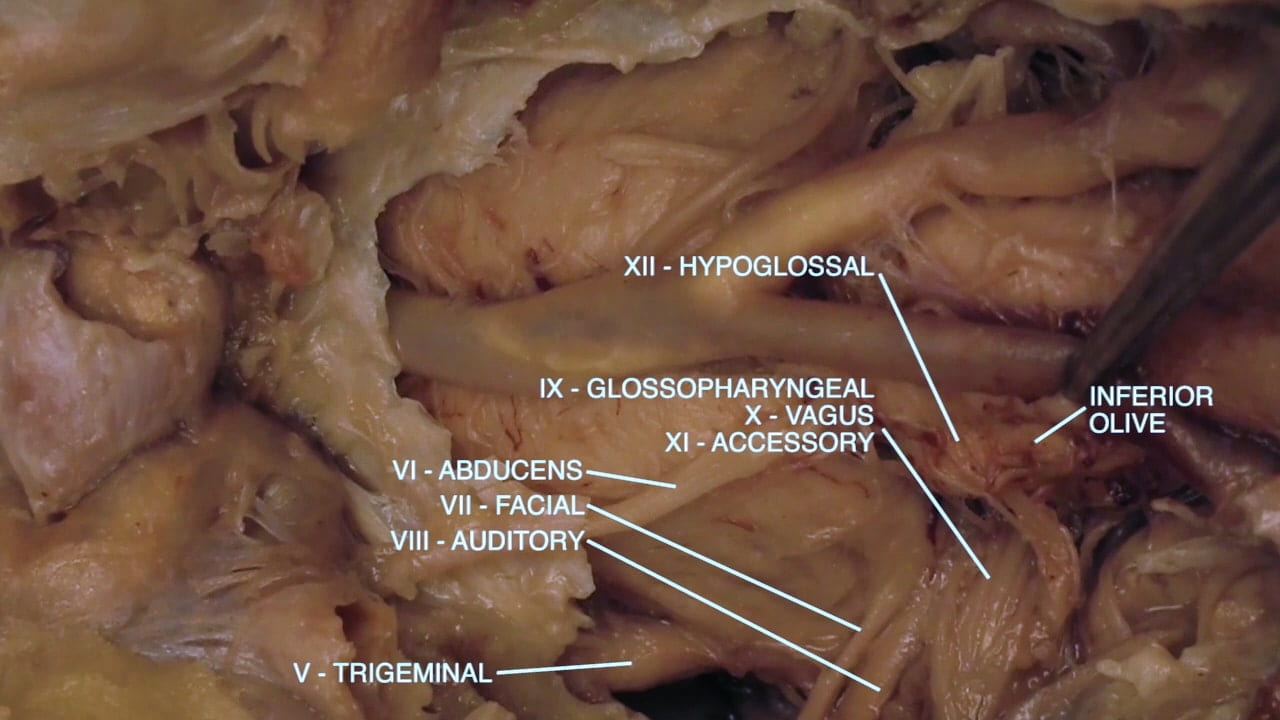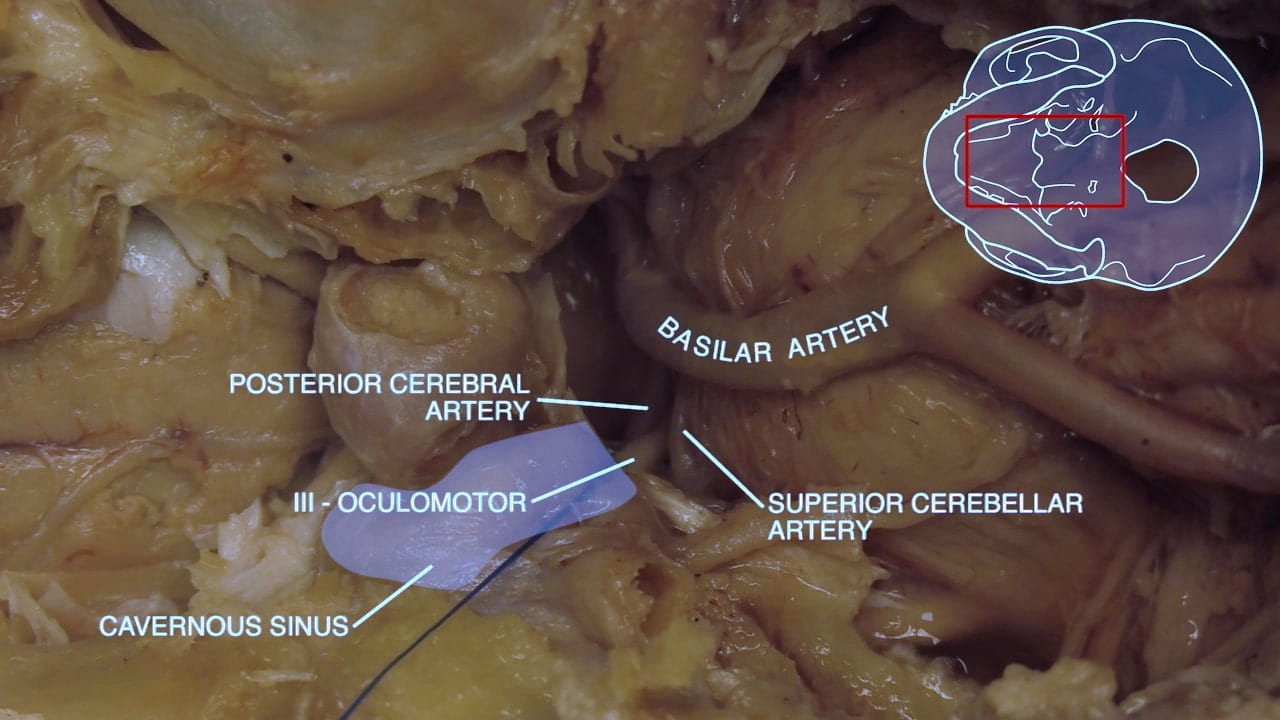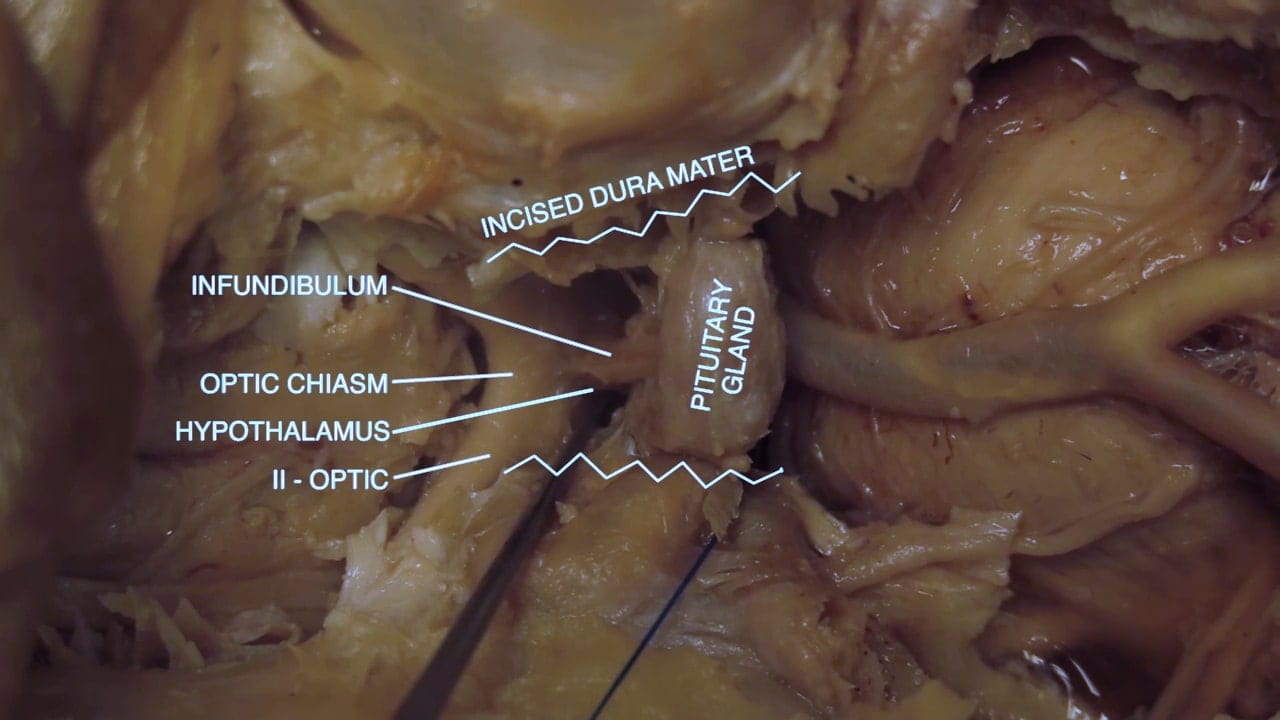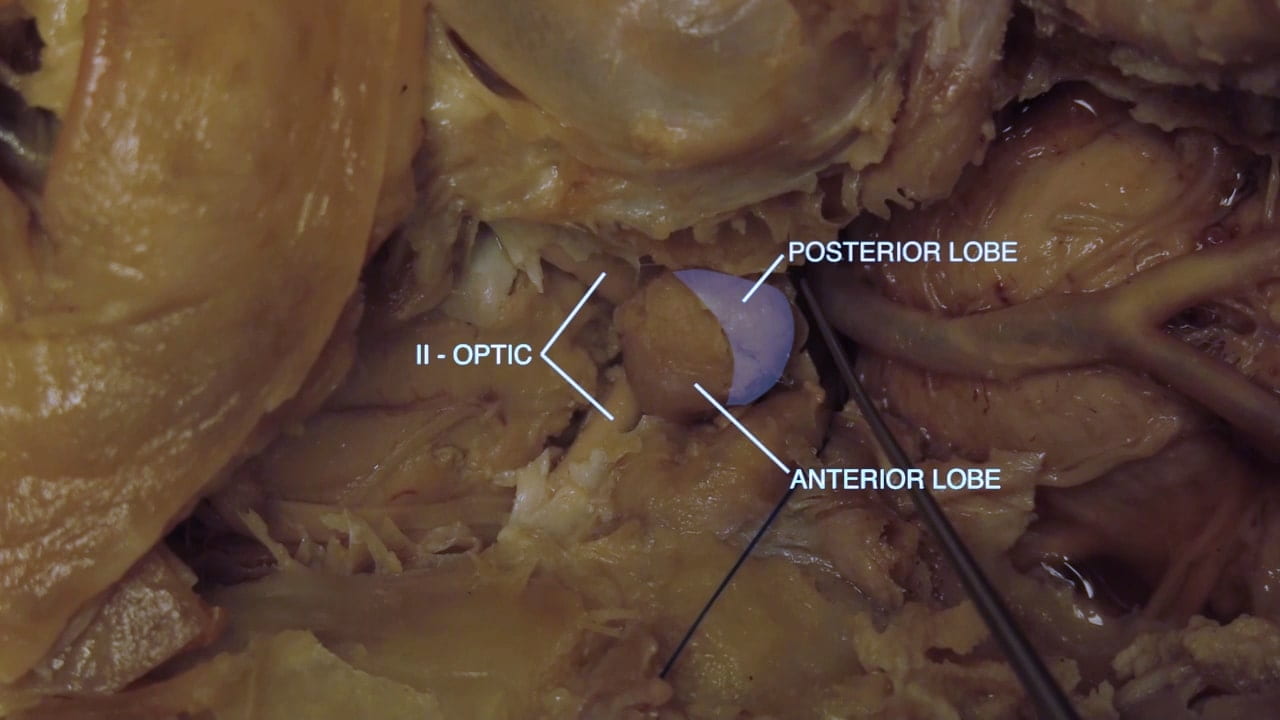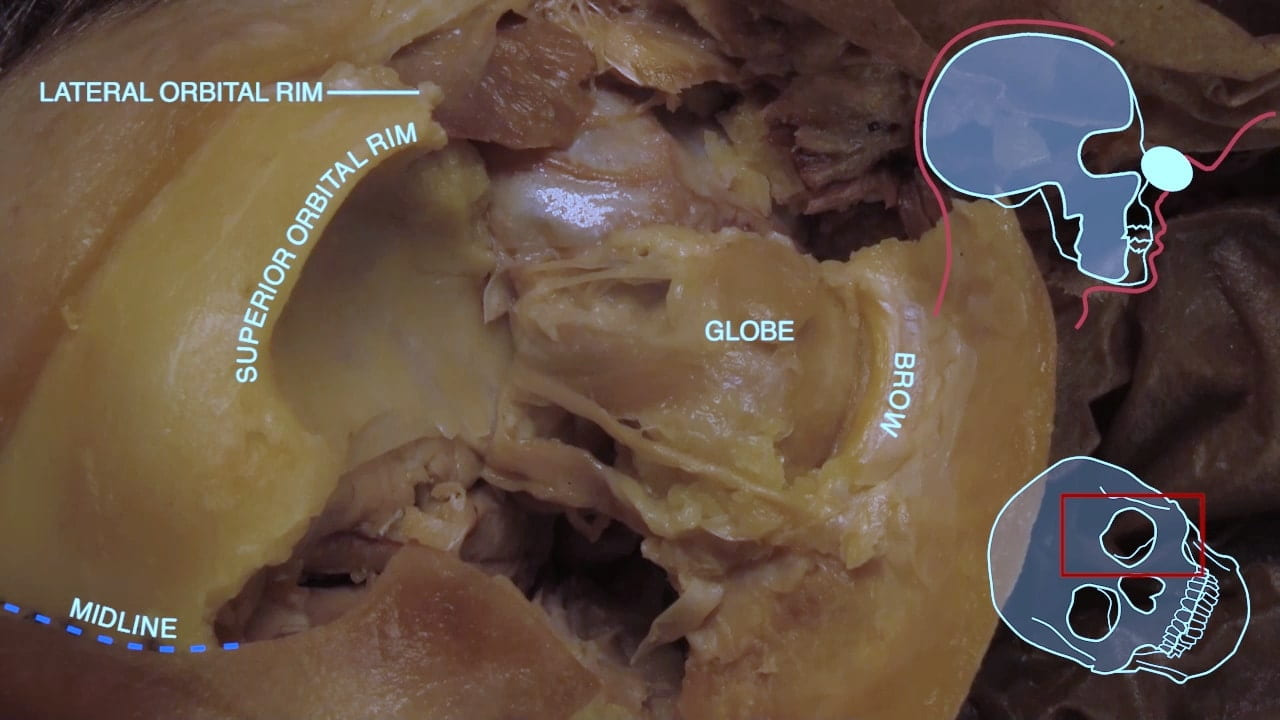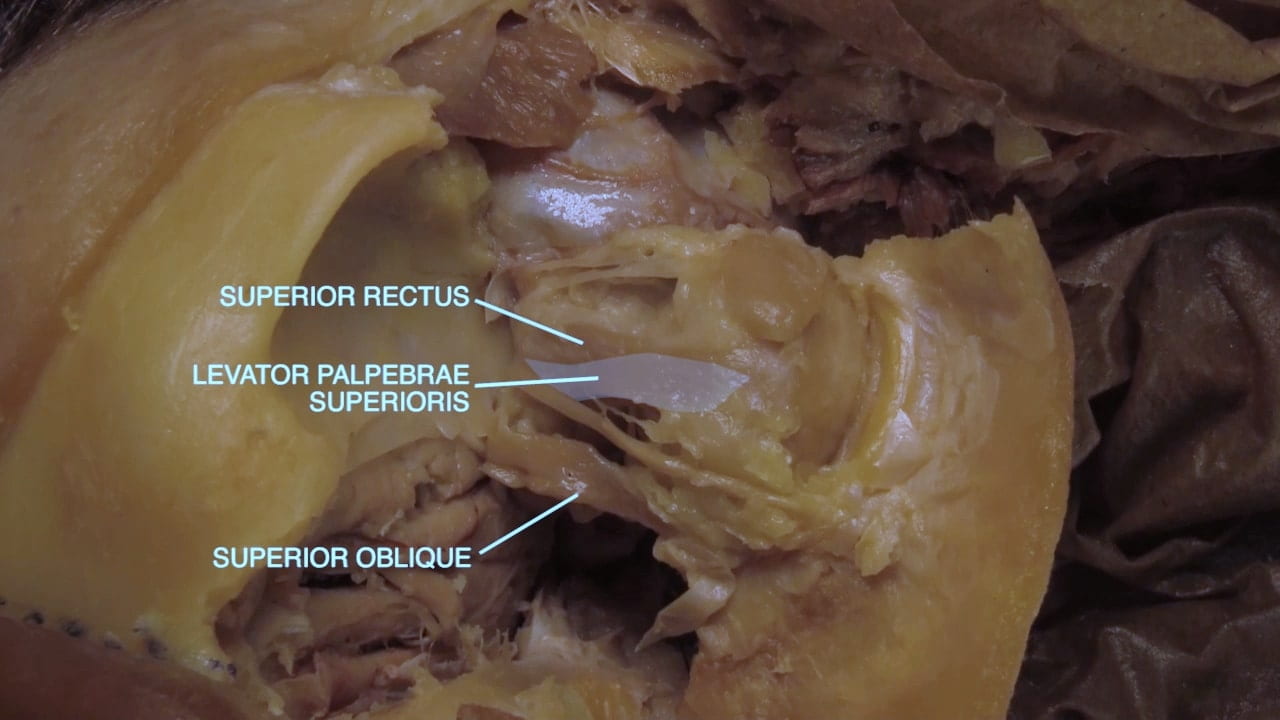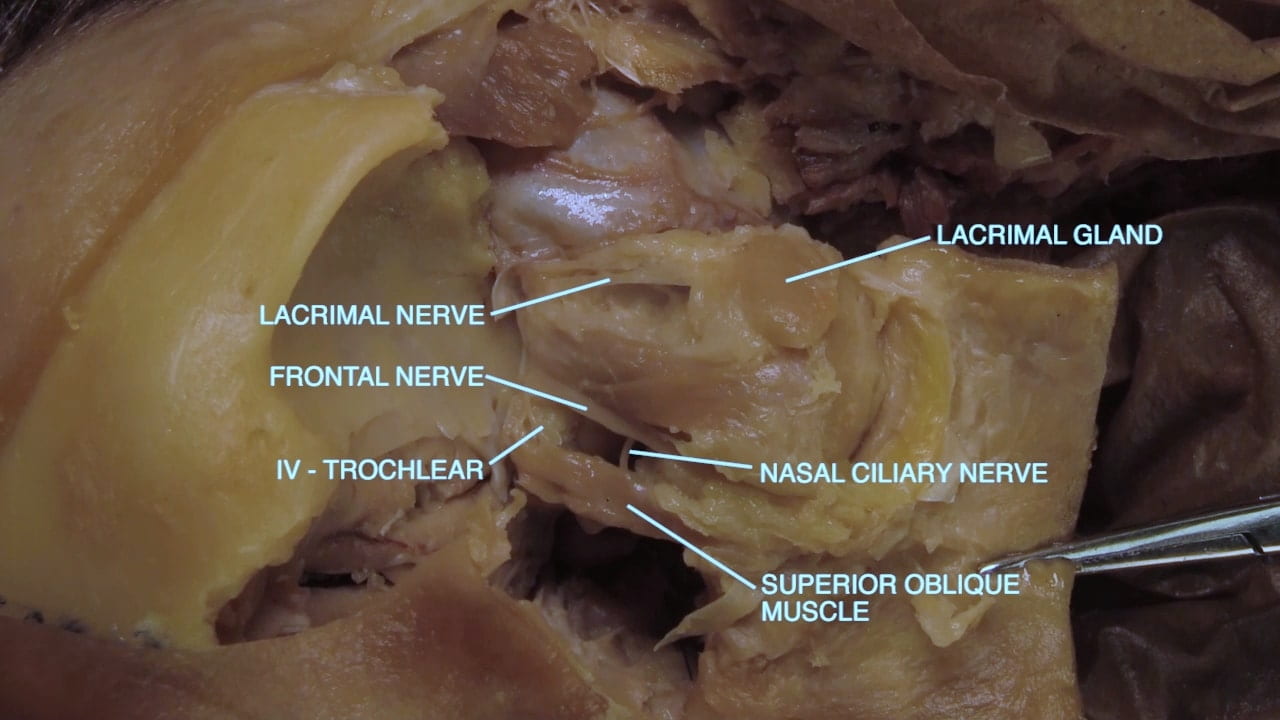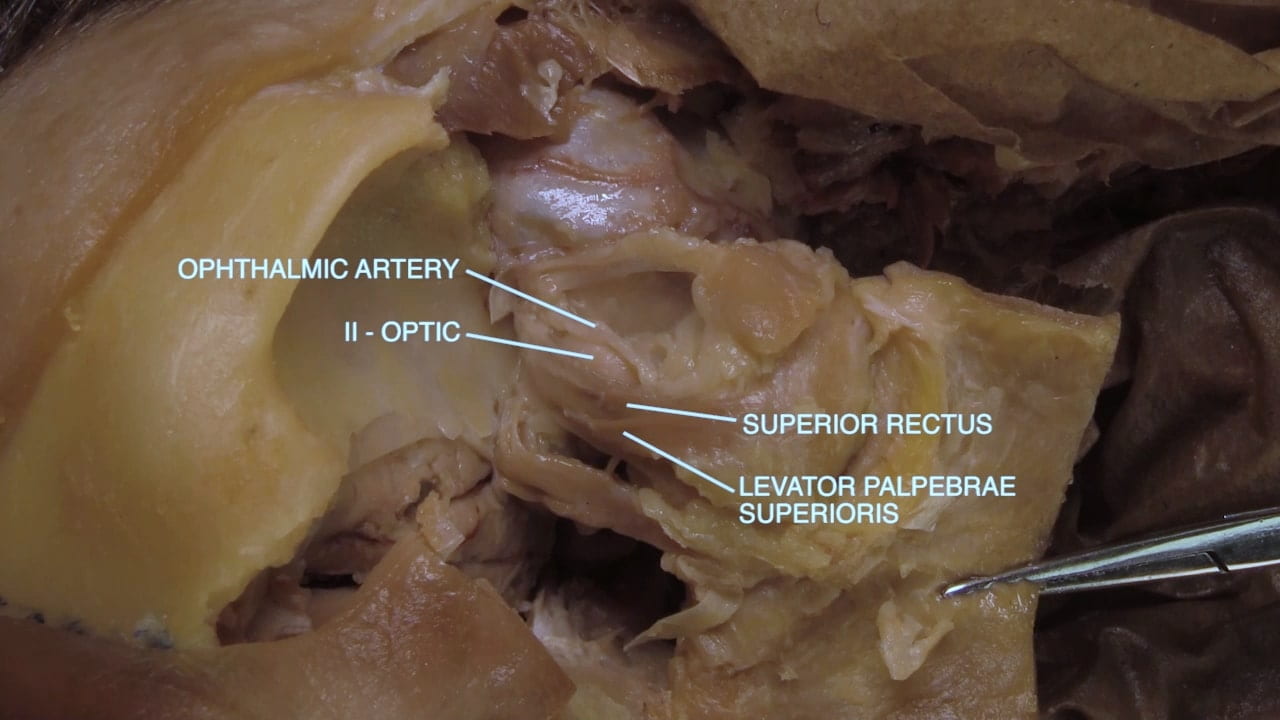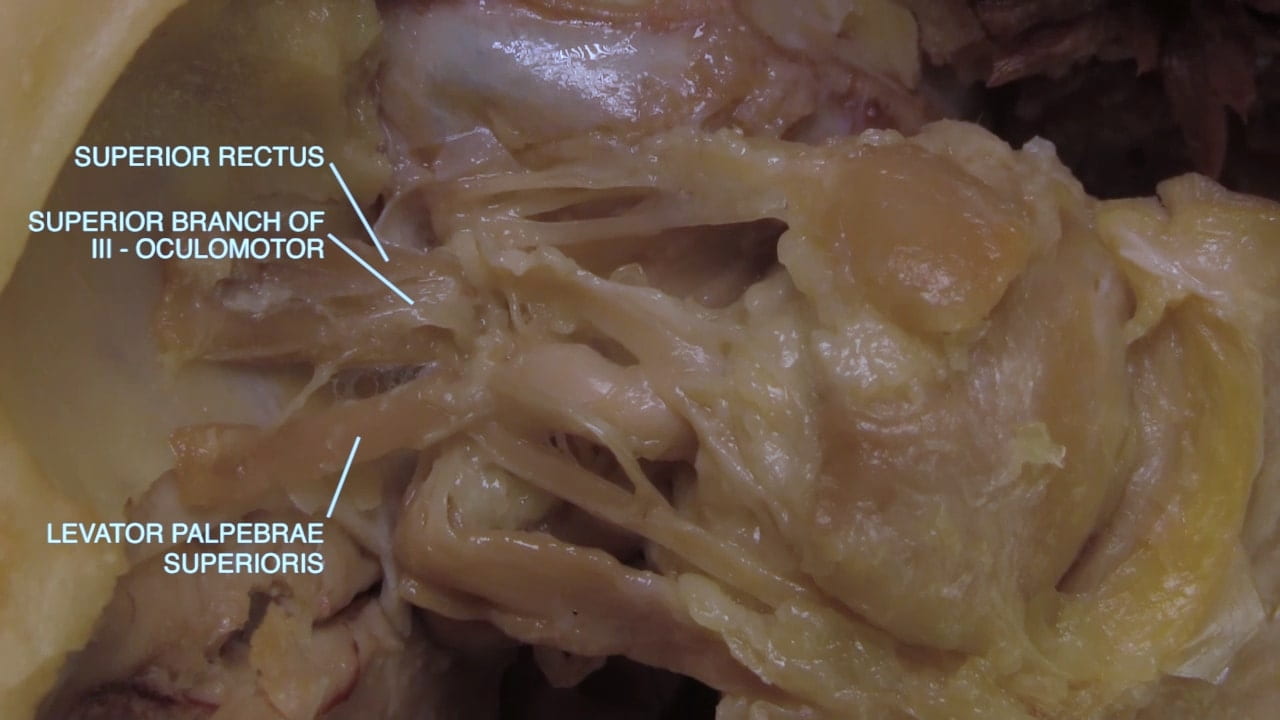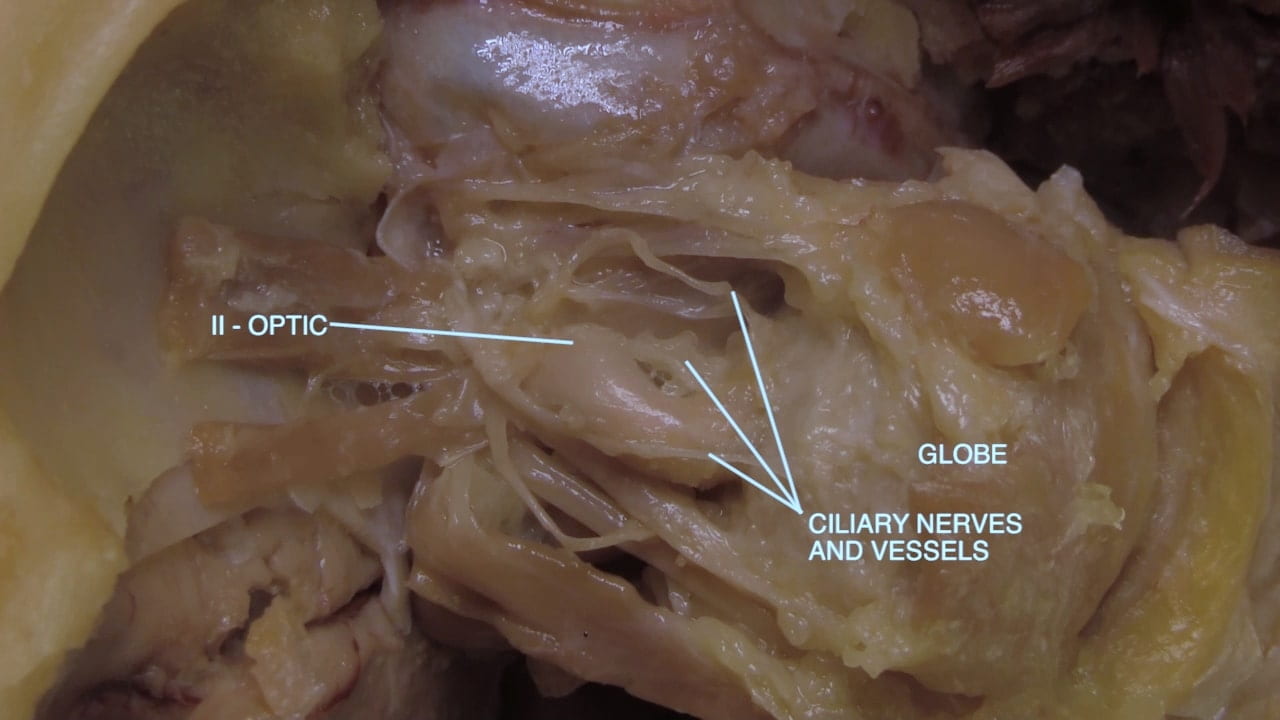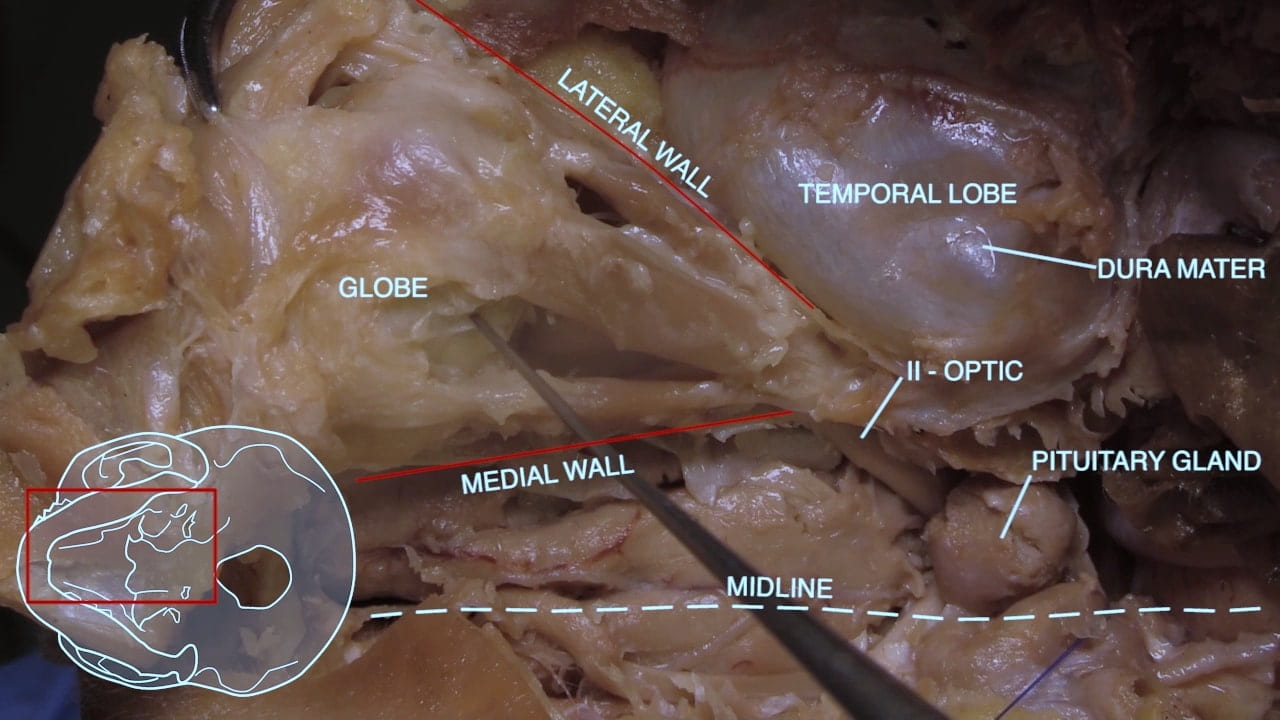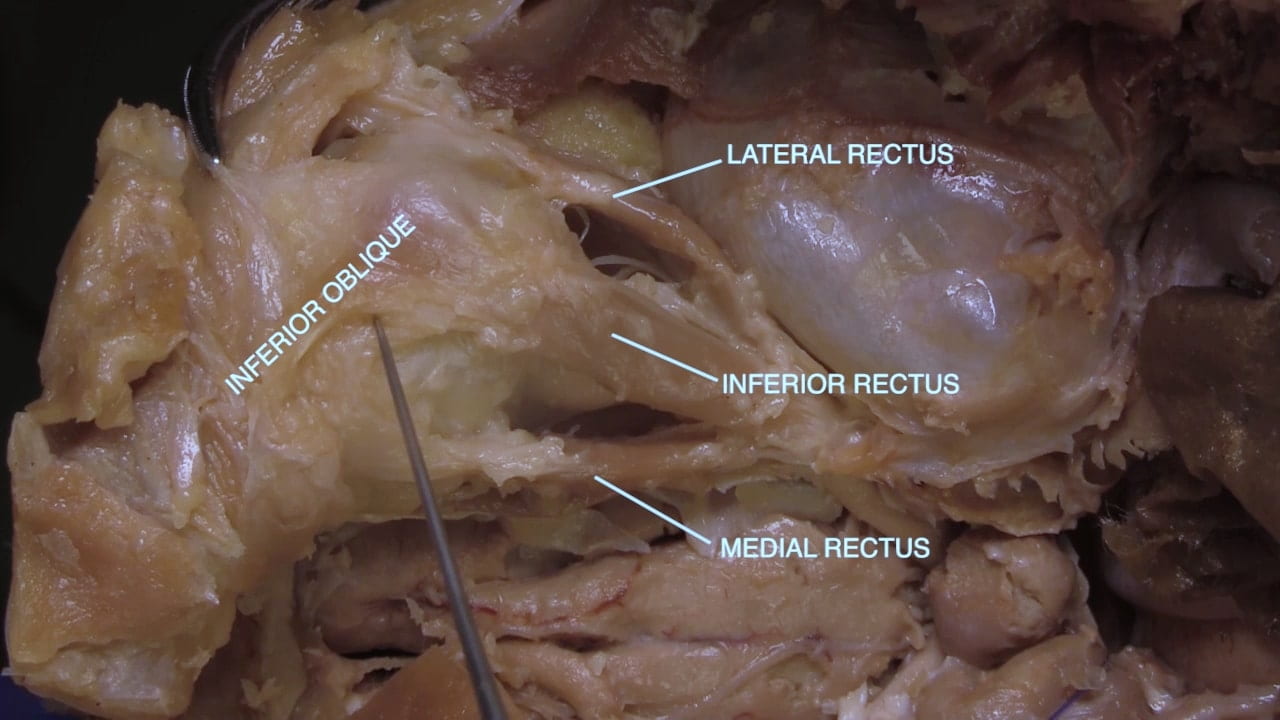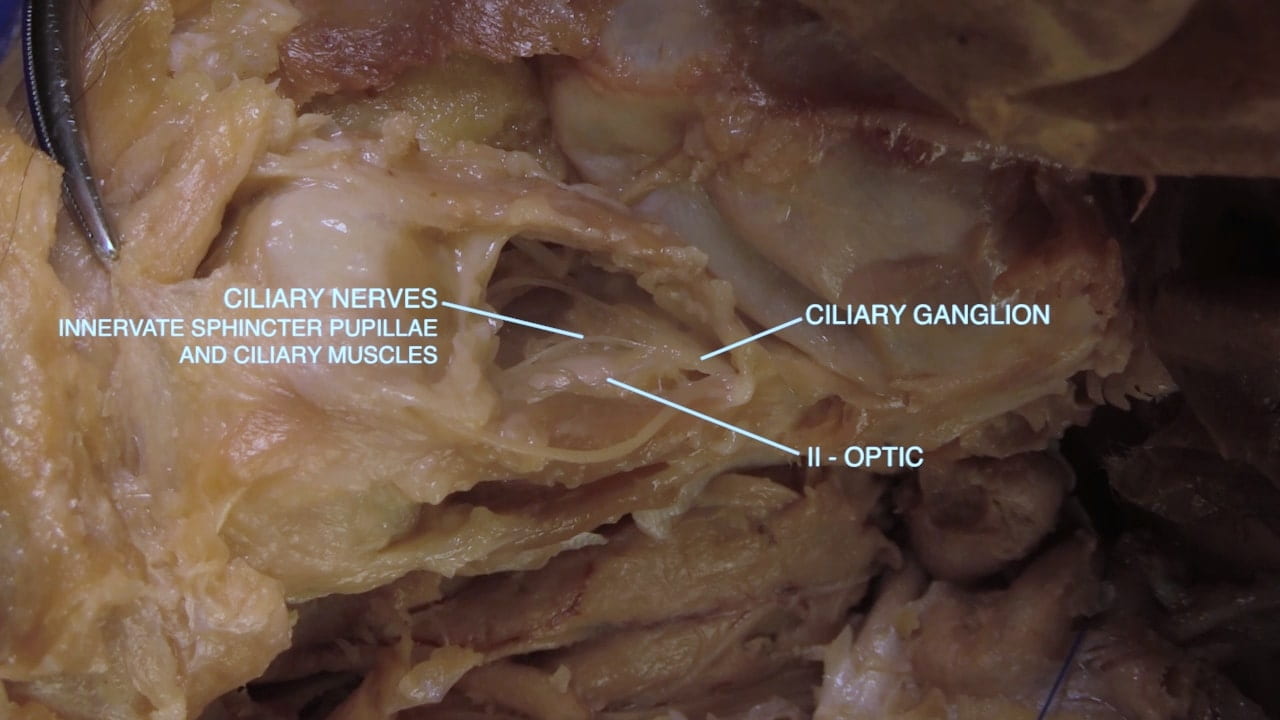Skull Base, Cavernous Sinus, Orbit
Lab Summary
In this lab structures of the skull base, cavernous sinus and orbit are taught. The trigeminal nerve branches in the middle fossa are included with the structures of cavernous sinus. The orbit and its contents are presented from superior and inferior perspectives. In situ base of the brain is taught from a complex dissection of skull base.
Lab Objectives
- Describe exit of cranial nerves from base of brain.
- Describe dural course of cranial nerves.
- Describe clinical significance of middle meningeal artery.
- Describe the course of the cranial nerves and internal carotid artery through the cavernous sinus.
- Describe motor innervation of extraocular muscles.
- Describe components of anterior chamber of eye.
Lecture List
Cranial Nerves at Dural Base, Ventral Brain, Trigeminal and Cavernous Sinus, Orbit, Eye Anatomy, Skull Base, Orbit 360°
Cranial Nerves at Dural Base
Interior Skull Base
Cranial Nerves at Skull Base
Cranial Nerves at Base of Brain
Base of Brain
Pontomedullary Junction
Trigeminal and Cavernous Sinus
Orbitofrontal Dissection
Orbit
Anatomy of the Eye
Advanced Dissection: Anterior Skull Base
View but do not perform this technically difficult exposure.
Anterior Skull Base Gallery
Advanced Dissection: Orbit 360°
View but do not perform this technically difficult exposure.
Question 3: What is the functional importance of the ciliary ganglion?
Post-ganglionic innervation of pupillary sphincter.

